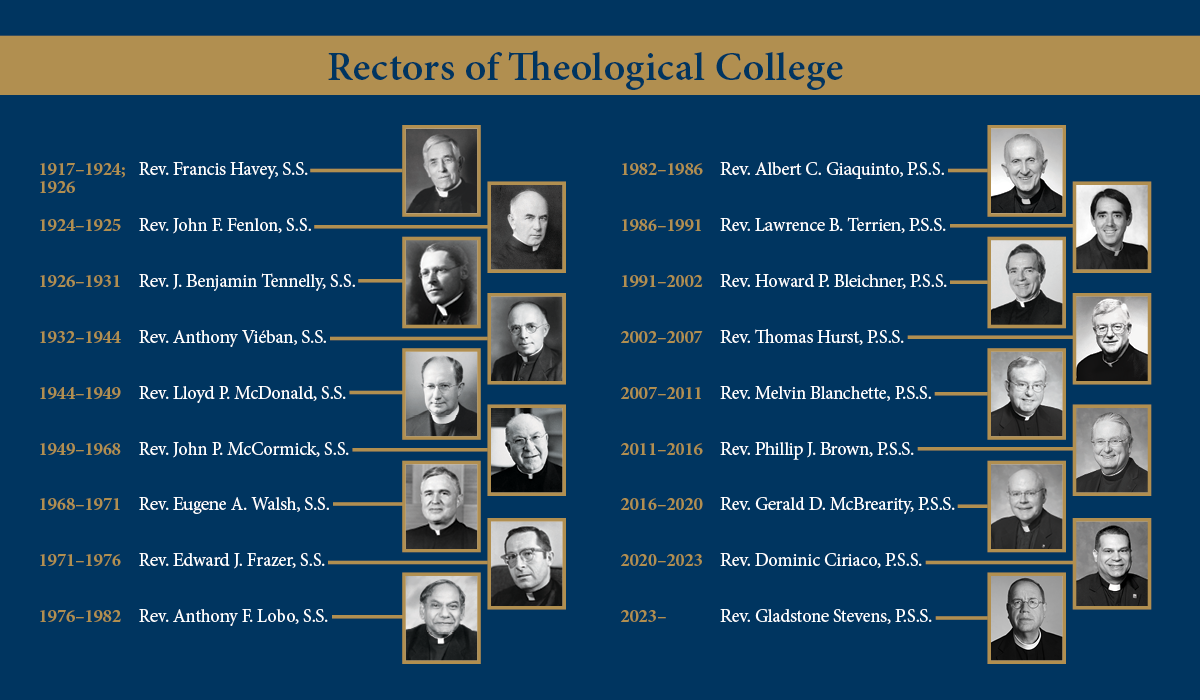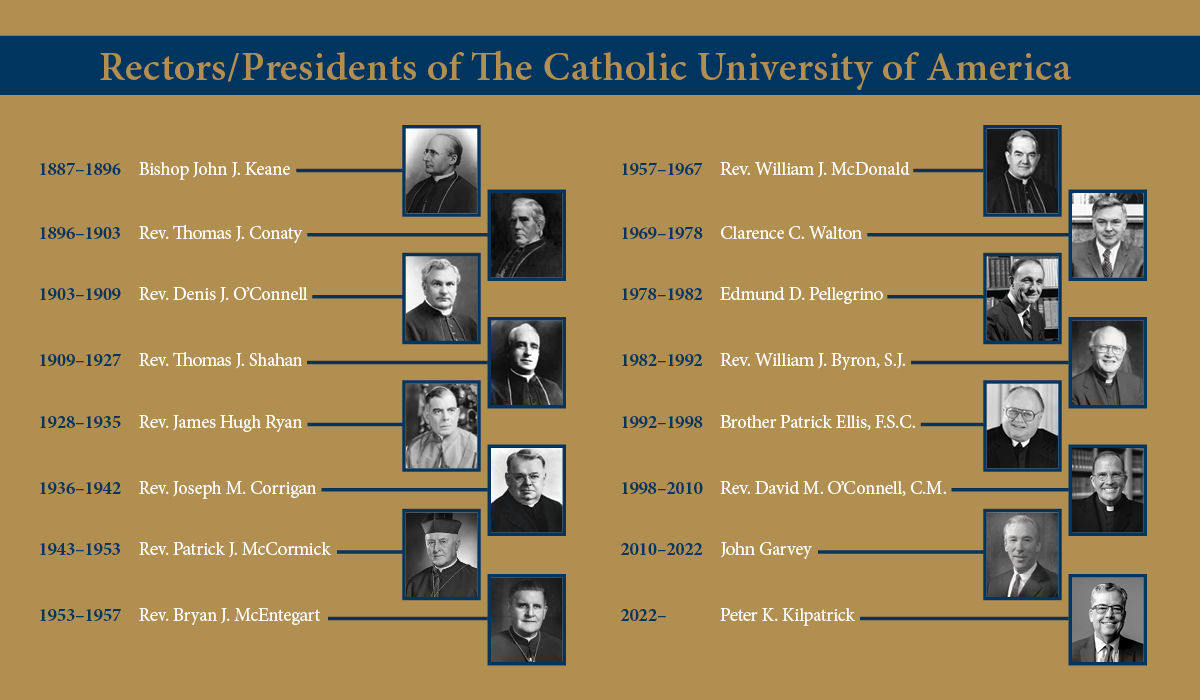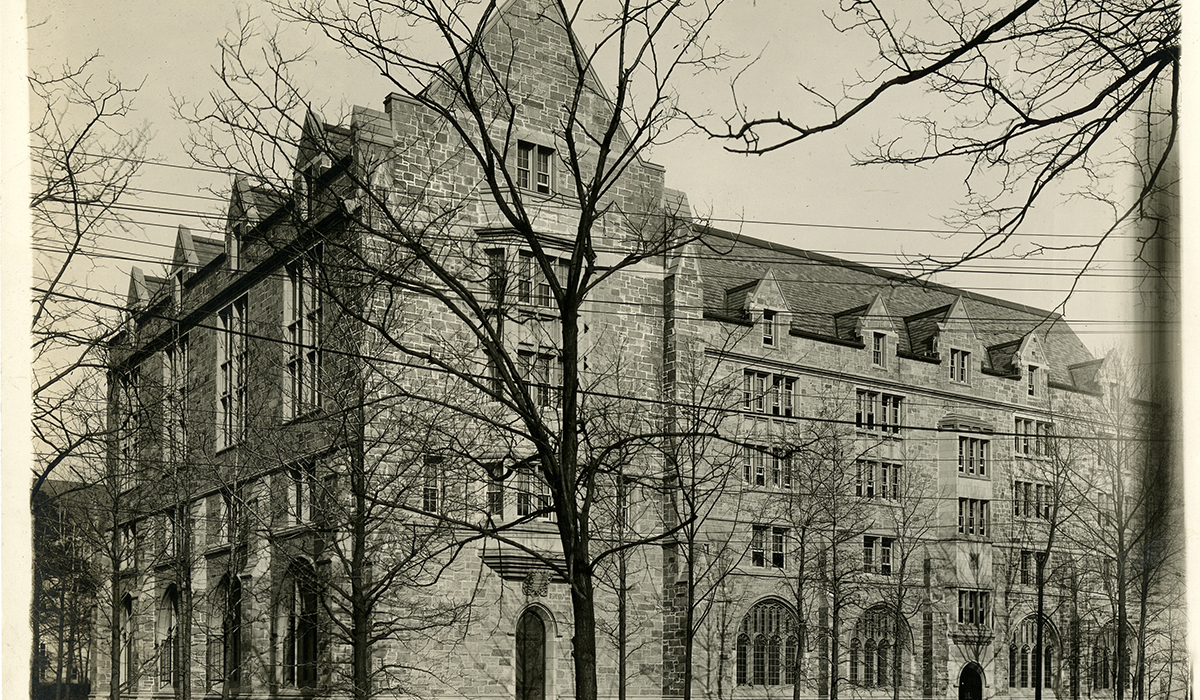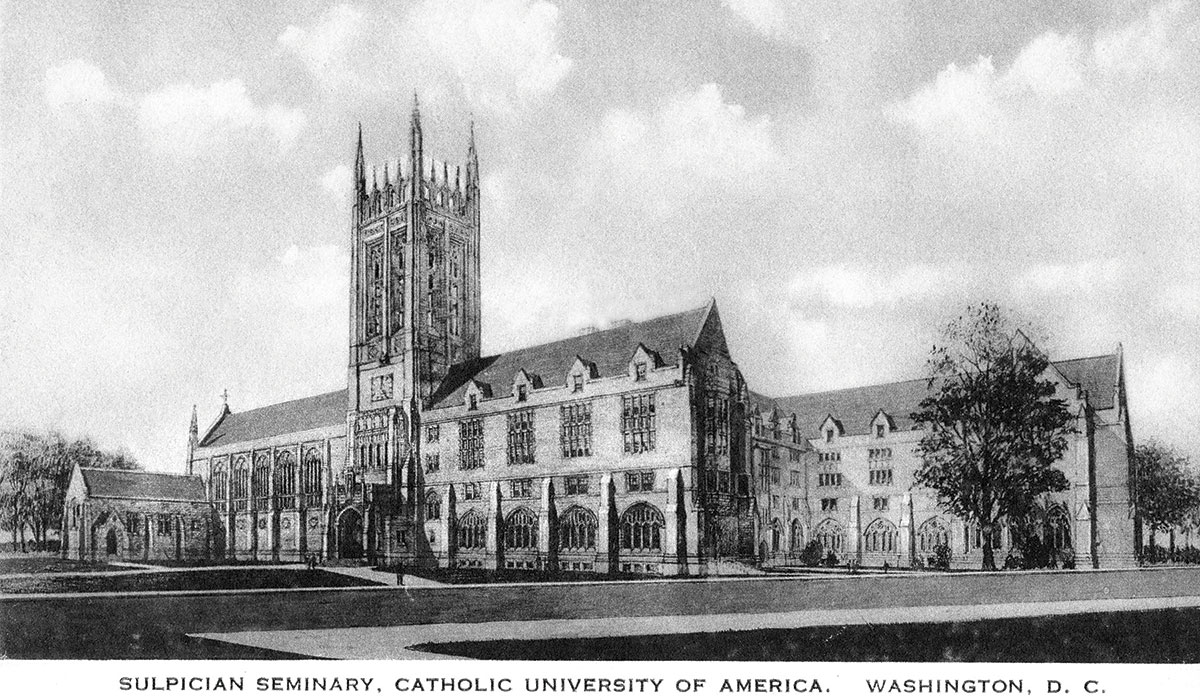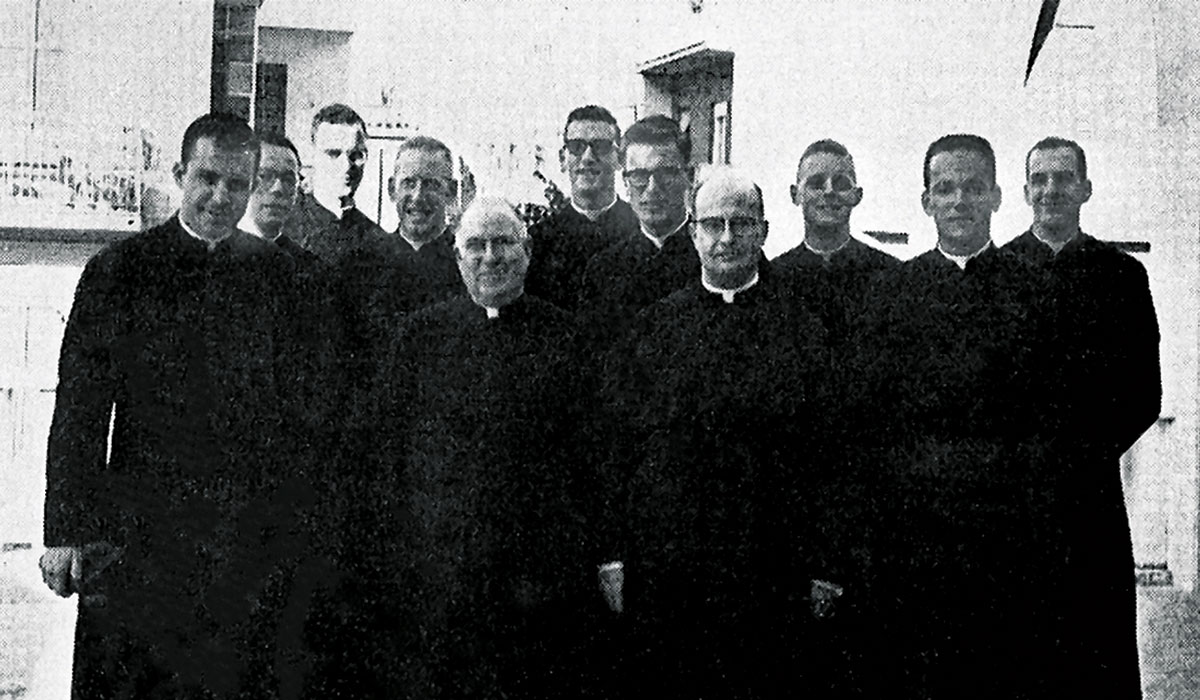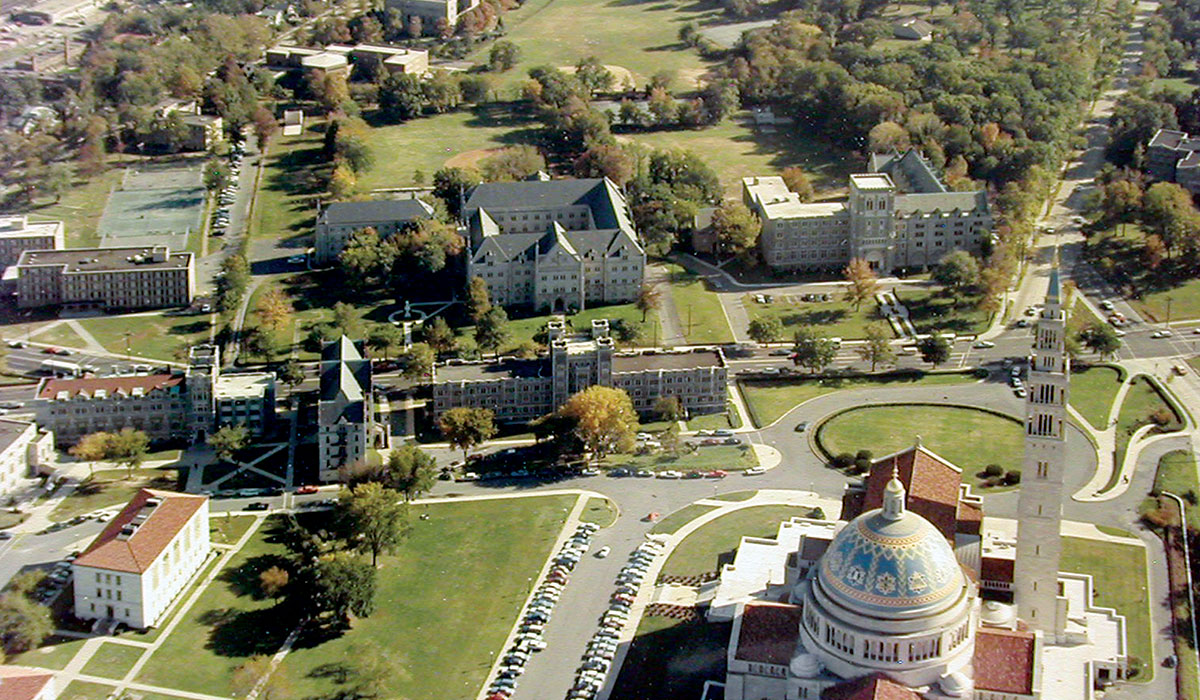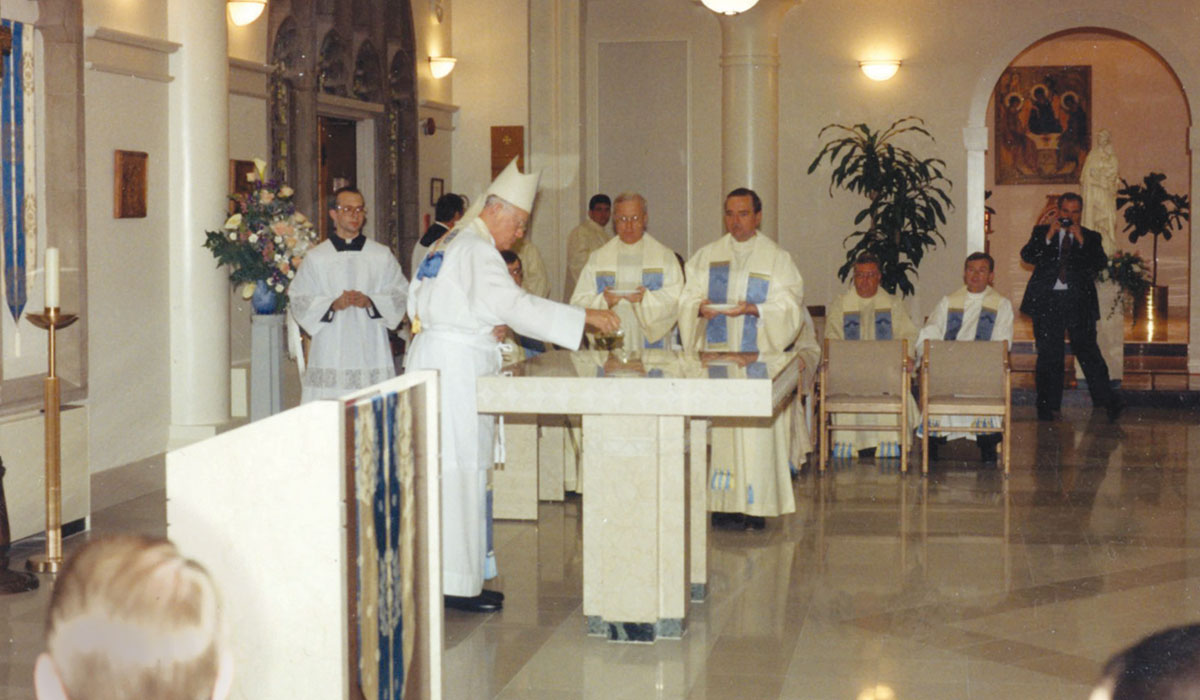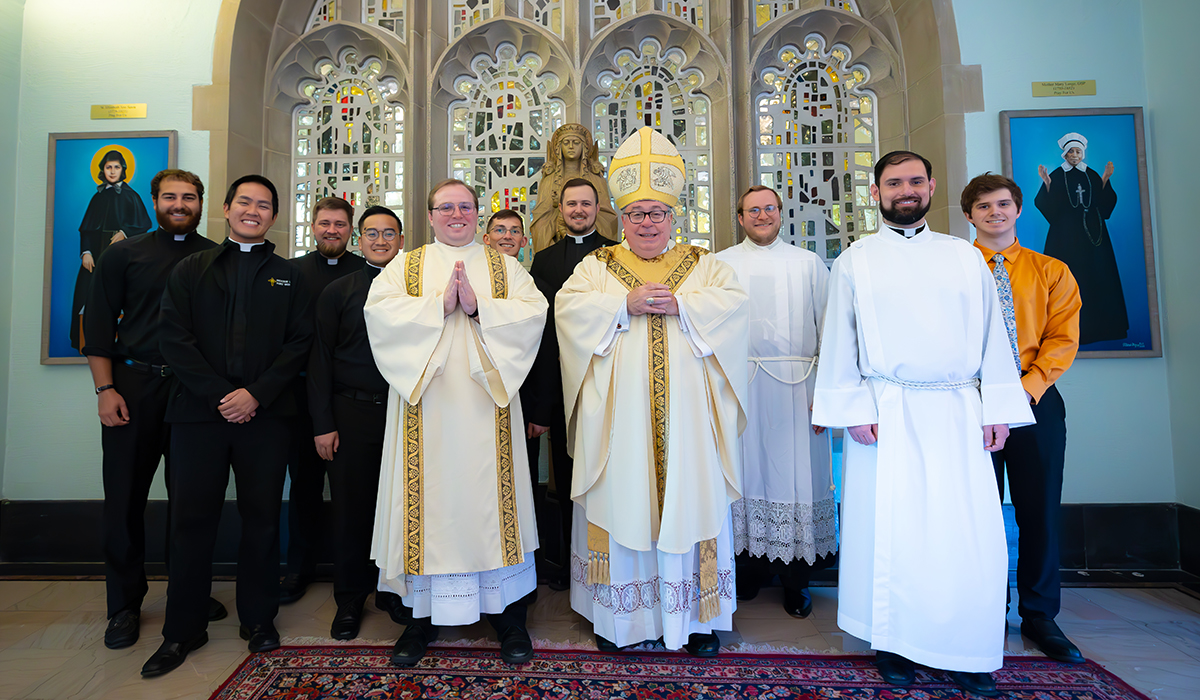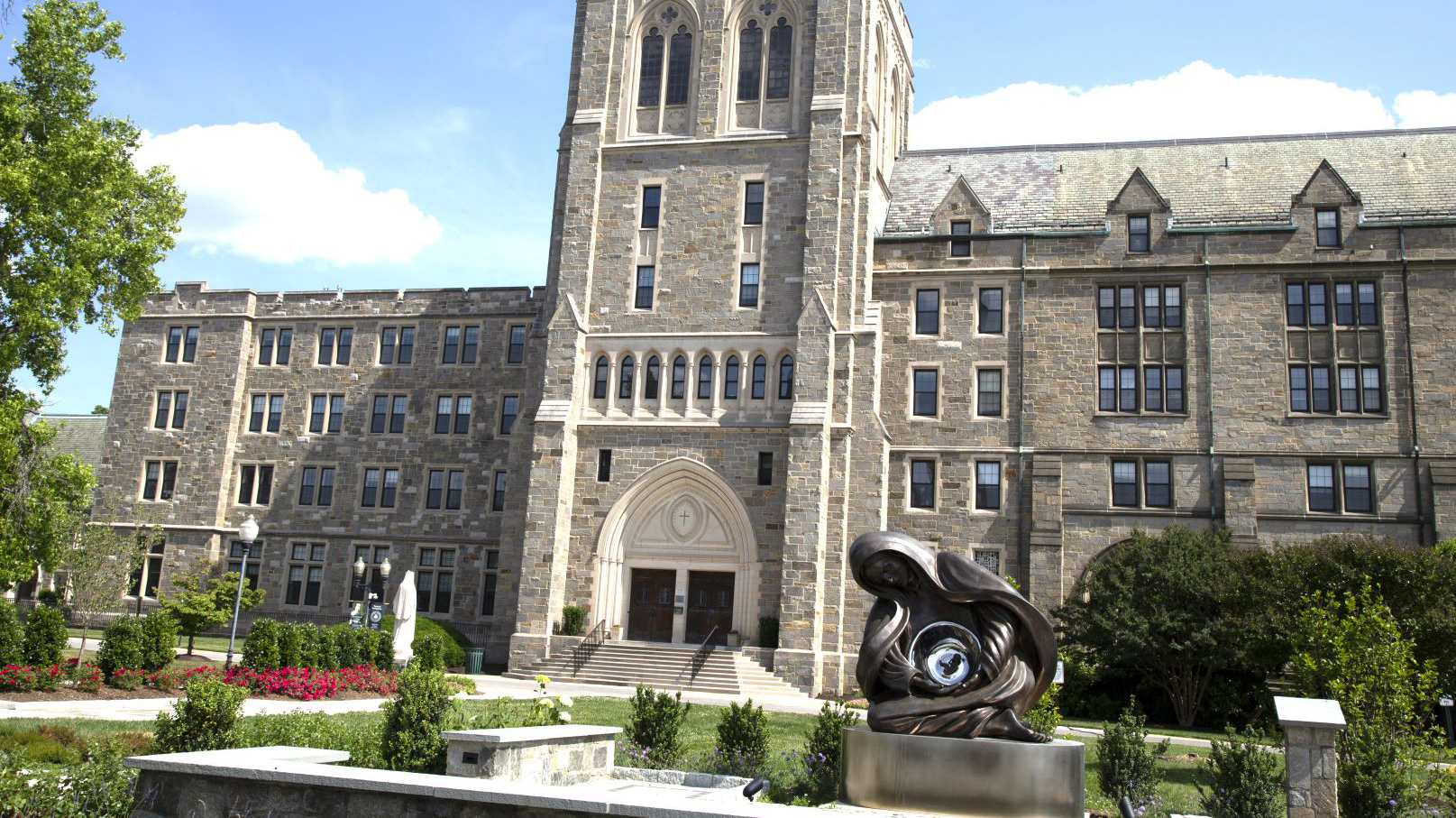The National Seminary of The Catholic University of America: Established in 1917
Throughout the history of Theological College, a spirit of cooperation has guided the seminary faculty as it sought to integrate the seminary into the mission of the University, working closely with the faculties of the School of Theology and Religious Studies and the School of Philosophy. Such cooperation encouraged the faculties to offer a curriculum that would enable each seminarian to engage the history of ideas while preparing them to be effective pastors in a quickly changing secular and ecclesial culture. This cooperative spirit has enabled Theological College to become a seminary particularly appropriate for priesthood candidates who possess proven intellectual gifts and determination and who are eager to cultivate a theological vision that will guide them as future leaders in their dioceses.
Chronology
Sulpician Seminary
-
1917
An annex of St. Mary’s Seminary in Baltimore, the Sulpician Seminary opens in Washington, D.C., with 40 4th-year seminarians. They live in the Paulist Apostolic Mission House (on the Catholic University campus) and are taught by three Sulpicians and one Paulist.
-
1918
Nuns from the Congregation of Divine Providence of Kentucky begin their 68 years of domestic care for the seminary and its residents. The now 70 seminarians reside in Caldwell Hall and the Paulist Apostolic Mission House.
-
1919
The Sulpician Seminary becomes a full theologate with seminarians in all four years of study. The building is dedicated on September 23 by Cardinal James Gibbons of Baltimore.
-
1923
The Basselin Foundation is established at Catholic University and the Sulpician Seminary, funded through a generous bequest from Theodore Basselin to provide for the education of seminarians in philosophy and public speaking.
-
1924
Sulpician Seminary becomes independent of St. Mary’s Seminary in Baltimore.
-
1926
Seminarians are given responsibility for Sunday liturgies at the Basilica of the National Shrine of the Immaculate Conception, including High Mass and Vespers.
-
1928
The Sulpician Seminary Alumni Association is founded.
-
1937
Sulpician Seminary becomes the University seminary of Catholic University. First-year seminarians take their classes at the University. The next year, both first and second-year seminarians receive their academic formation at the University the following year and first-, second-, and third-year men do so in 1939.
Theological College
-
1940
A contract between Sulpician Seminary and Catholic University is ratified, through which the seminary is renamed Theological College and becomes a national pontifical seminary. All academic formation is now at Catholic University, with all other formation at Theological College.
-
1942
The Sedes Sapientiae (Mary, Seat of Wisdom) statue is erected in the seminary courtyard as a gift from alumni, marking the 25th anniversary of the seminary’s founding. (It was later moved to the front walkway.)
-
1966
The seminary building, the tower section, and the “new wing” (now McCormick Pavilion) are dedicated and blessed.
-
1969
Theological College initiates pastoral formation as part of the overall program of preparation for priesthood.
-
1971
The seminary faculty create the position of formation advisor, which quickly becomes a national standard.
-
1980
The seminary and University create the pre-theology program (for seminarians who already have bachelor’s degrees) and a joint Sacred Theology Bachelor’s/ Master’s of Divinity degree program.
-
1993
Phase one of a major renovation campaign that modernized and reconfigured the first floor is completed. The unused seminarian rooms were separated into office space in the new McCormick Pavilion.
-
1999
Phase two of the renovation campaign, with new student and faculty rooms, is completed.
-
2006
The newly renovated reservation chapel is dedicated.
-
2016
The seminary and University institute a five-year combined S.T.B and S.T.L. degree program and a six-year J.C.L. program.
-
2019
The Providence Hall Priests Residence, with apartments and common spaces designed to accommodate ordained TC alumni who are returning to complete S.T.L. or J.CL. degrees, is dedicated.
Rectors of Theological College
